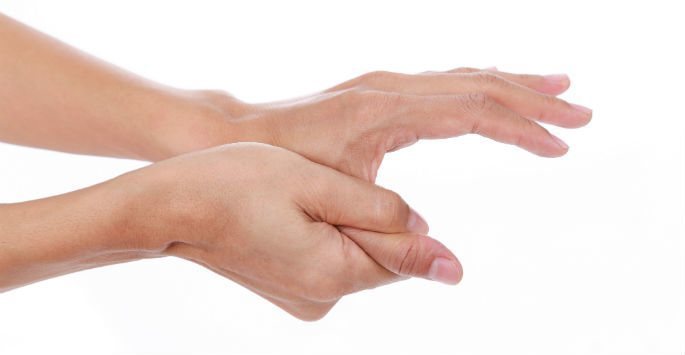Trigger finger, more formally known as stenosing tenosynovitis, is a condition in which a finger or the thumb gets locked in a bent position. The condition is more common in women than in men.
What are the Symptoms?
The affected finger may suddenly snap straight, like a trigger being pulled and released. Alternatively, the patient may not be able to straighten their finger at all. The patient may also feel discomfort or a lump at the base of the finger. Other symptoms can include limited mobility of the affected digit, a clicking or popping noise when the finger does move and pain.
What Causes Trigger Finger?
The fingers and thumbs have tendons that pass through sheaths or pulleys that keep the tendon close to the finger bone. If the sheath gets inflamed or irritated, it swells and thickens, which prevents the tendon from moving normally. If the condition isn’t treated, the sheath develops scars and nodules that make the sheath even more abnormally thick. This impairs the finger’s mobility even more.
Trigger finger is more common in people with certain health problems, such as diabetes or rheumatoid arthritis. Occupations and activities that require repeated strong gripping can increase the chances of developing trigger finger. For example, anybody who uses a screwdriver a lot might develop trigger finger.
How is Trigger Finger Treated?
There are many possible treatments for trigger finger. In a lot of cases, Dr. Arora will start by simply recommending that the patient rest the affected hand for at least four weeks. He may also recommend anti-inflammatory medication.
Our doctor may also splint the patient’s finger to keep it straight. In some cases, the patient will wear the splint only at night to avoid curling their fingers into a fist while sleeping. The patient may wear the splint for up to six weeks. Dr. Arora may also recommend gentle stretching exercises to improve the finger’s mobility.
If none of these methods prove helpful, our doctor may recommend a steroid injection near or directly into the affected sheath to reduce swelling and let the finger move freely again. Steroid injections are the most common treatment for trigger finger, and they work for about 90 percent of non-diabetic patients. The injection works for about 50 percent of the patients with diabetes.
An outpatient procedure in which the doctor breaks apart the constriction is often necessary if non-surgical treatments have failed. In severe or stubborn cases, our doctor may perform surgery on the affected tendon sheath.
Learn More During a Consultation
There is no one-size-fits-all treatment for trigger finger, as the best treatment option will depend on the unique situation. Make an appointment at Arora Hand Surgery in West Bloomfield, Howell, Warren, or Macomb so that our team can assess your condition and come up with a treatment plan for relieving you of your symptoms. Contact us today to schedule a consultation.













